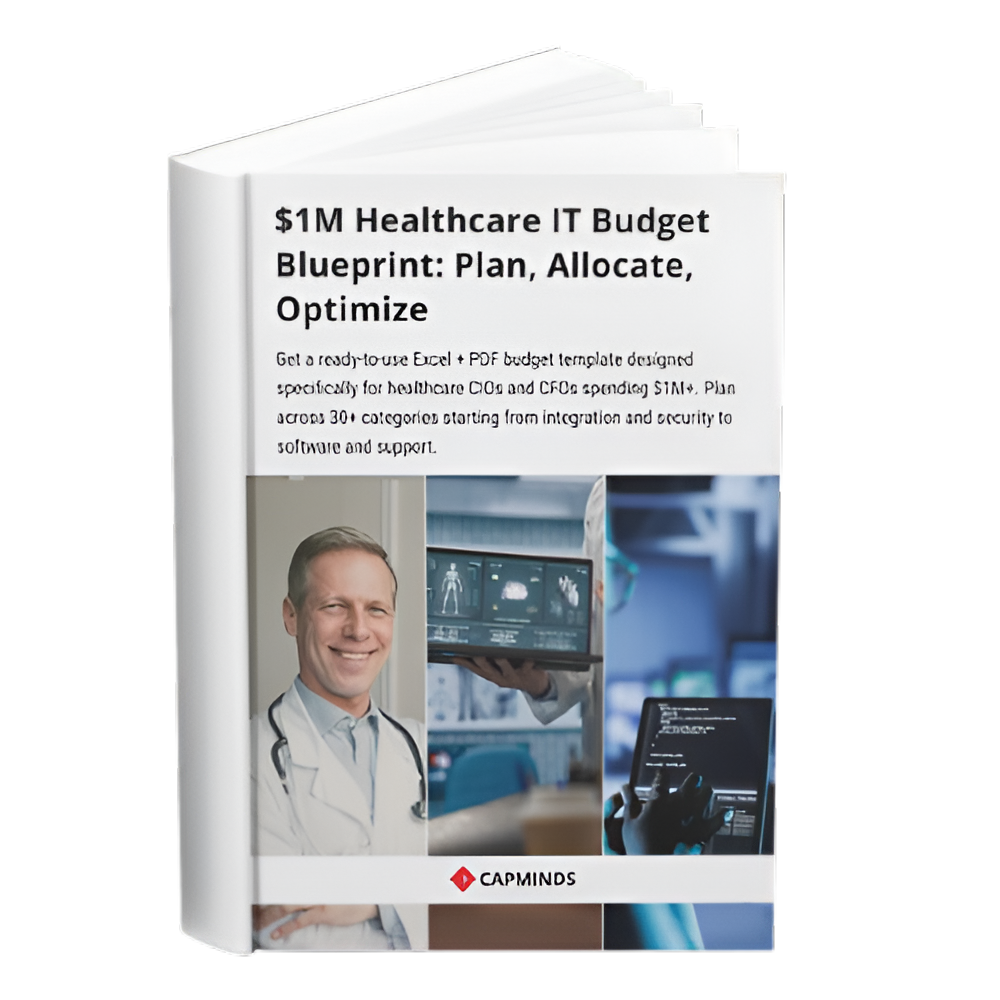What’s Dragging Down Your UDS Scores? (and How Better Chronic Disease Tracking Can Fix It)
The Uniform Data System (UDS) is the federally mandated reporting system for HRSA-funded health centers (FQHCs and look-alikes). Each year, these centers submit standardized data on patients served, services delivered, and quality outcomes. UDS “scores” (quality measures) include chronic disease metrics such as hypertension control and diabetes A1c control. These measures are critical: they influence grant funding, quality awards, and public reporting for health centers.
For example, HRSA reports that health centers improved hypertension control (63% of patients controlled in 2022, above the 59% HEDIS benchmark) and reduced uncontrolled diabetes (30% uncontrolled, well below the 42% HEDIS benchmark). Since UDS performance directly reflects patient care, low UDS scores can indicate real clinical gaps and can jeopardize funding compliance.
Related: What is UDS Reporting in Healthcare? Everything You Need to Know
Common Reasons Behind Declining UDS Scores
Chronic conditions like diabetes, hypertension, and asthma are high priorities in primary care. Unfortunately, many clinics struggle to “close the loop” on these conditions, leading to lower UDS results. Common issues include:
1. Incomplete or Unstructured EHR Data
UDS quality calculations break when key facts live in free-text, scans, or the wrong module. HRSA is explicit: certain values must live in structured fields (e.g., the 10-year ASCVD risk score must be recorded as a quantitative result in a structured field), and diabetes HbA1c results must be present in the patient record—if they’re missing or only scanned, the patient won’t count correctly. Unstructured notes also block automation: AHRQ emphasizes that structured EHR data can be automatically extracted for quality measurement, whereas manual review is error-prone and costly.
Research shows that measures computed from a single site’s EHR can be materially distorted by incomplete information, and data sharing/standardization significantly changes the quality results that drive payment and public reporting. Common failure modes include labs filed as PDFs, vitals entered in comment fields, or diagnoses left off the problem list—each knocking patients out of denominators or misclassifying control status. Practical guidance aligns with this: use dropdowns/checkboxes, enforce required fields at intake, and validate with targeted tools (e.g., diabetes HbA1c data validation) to catch missing structured results before submission.
2. Lack of Interoperability Across Care Networks
Even when care is delivered, UDS performance can sag if data never makes it into your EHR in a computable form. Chronic disease measures hinge on the most recent structured results—and HRSA counts a missing result (e.g., latest HbA1c) as poor control, which depresses scores when outside labs or specialist notes don’t flow back cleanly.
Systemically, the gap is still real. ONC reports that while hospital exchange has expanded, only about three-quarters of hospitals actually integrate received information into the EHR; the rest can send/receive but can’t reliably file the data to drive quality calculations or registries. In 2023, 70% of hospitals engaged in all four interoperability domains (send, receive, find, integrate), up from 46% in 2018—progress, but integration remains the weak link.
For FQHCs and health systems reporting UDS, the real-world failure modes are predictable: external A1c and lipid results arrive as faxes/PDFs, ophthalmology or cardiology summaries land in the media tab, and community lab feeds aren’t mapped to LOINC—so patients fall out of denominators or default to “uncontrolled.” The 2025 UDS manual underscores that HRSA’s reporting considerations can expand on eCQM specs, raising the bar for data completeness across sources.
Mitigation is technical and contractual: stand up HIE/QHIN connections under TEFCA to normalize cross-network exchange, require interface vendors to deliver coded results, and run monthly integration audits so every outside result lands in the right discrete field that your UDS logic reads.
3. Poor Chronic Disease Tracking and Follow-Up
UDS scores take a direct hit when clinics don’t systematically track who is due for labs, BP checks, meds titration, or specialty follow-ups. For diabetes, the eCQM behind UDS (CMS122) counts patients as uncontrolled if the most recent HbA1c is >9% or missing (no test/result in the period), so every missed A1c or unfiled result drags performance down, regardless of actual clinical control.
Operationally, gaps cluster around three issues:
- No live registry to surface who’s overdue;
- No recall cadence (calls/texts/portal nudges) to bring high-risk patients back
- And no point-of-care prompts to close gaps during visits.
AHRQ describes disease registries as the core tool for chronic care panels (diabetes, HTN, asthma) because they enable proactive outreach and cohort management rather than reactive chart chasing.
Evidence also shows that secure messaging via patient portals is associated with improved diabetes outcomes and adherence, an efficient way to execute recalls between visits. For hypertension, team-based follow-up (nurses, care managers, pharmacists) improves BP control and is cost-effective, ideal for structured recall programs.
Stand-up EHR registries filtered by last A1c/BP date; run weekly lists for outreach; use CDS alerts to order labs or intensify therapy when the patient is in front of you; and monitor a monthly dashboard of “due/overdue” rates. These steps convert passive charts into an active pipeline of follow-ups and reliably lift UDS chronic disease performance.
4. Workflow Gaps and Staff Inconsistency
UDS depends on consistent, structured capture of clinical data. When sites, shifts, or roles document the same thing in different places (flowsheet vs. note vs. scan), data completeness and accuracy fall, two core pillars of data quality, so patients drop from denominators or default to “uncontrolled.”
Field evidence, common failure patterns
- Vitals in comments; labs as PDFs: Results are “there” but not computable by UDS logic or dashboards.
- Problem list drift: Diagnoses updated in text, not on the active list, breaking registries and recalls.
- Template sprawl: Multiple visit templates across clinics capture different fields, so reports are incomplete.
- No standard work for follow-ups: Staff don’t share a single cadence for ordering A1c/BP rechecks or closing referrals, so gaps persist.
What high performers standardize
- One best-practice template per visit type (with required, structured fields for BP, A1c, meds, and assessments). Use smart forms and quality dashboards to give immediate feedback at the point of care.
- Mapped registries for diabetes/HTN with role-based queues (MA → orders pre-visit; nurse → recalls; pharmacist → titration protocol).
- Visual “standard work”: swimlane maps that show who enters what data where, reducing variation across sites and shifts.
- Monthly reliability checks (run charts/PDSA) to catch slippage early, before UDS season.
ONC’s USCDI and certification criteria push uniform, interoperable data elements. When teams align templates and workflows to those standards, more results land in the right discrete fields, and UDS tables populate correctly.
5. Manual Reporting and Data Validation Errors
Spreadsheet stitching of eCQM/UDS exports → version drift, copy-paste mistakes, and late discoveries of missing labs → assemble UDS inside the EHR/warehouse, not in Excel; lock a single truth table and role-based review path.
“Looks right” reviews instead of rules-based checks → patients misclassified (e.g., diabetes marked controlled with no A1c on file) → apply the eCQM logic exactly: CMS122 treats missing A1c as poor control. Validate numerator/denominator with query logic before submission.
Unstructured artifacts (PDF labs, scanned vitals) → data present but not computable → enforce discrete fields and interface mapping; reject PDFs for results that feed UDS.
No formal safety checks for reporting workflows → latent configuration errors persist year-round → run ONC SAFER self-assessments for CPOE/results management & contingency; document remediation.
One-time, end-of-year cleanups → surprises during UDS season → institute monthly edit audits using HRSA’s UDS edits/checklist; track anomalies (e.g., extreme rates, empty fields) and fix at source.
The EHR-Integrated Solution: Chronic Disease Tracking That Works
1. Centralizing Data with Disease Registries
An EHR-embedded disease registry pulls one computable record of truth for each condition (e.g., diabetes, hypertension): diagnosis status, latest labs (A1c, lipids), vitals, meds, and due dates. Registries let teams see who is uncontrolled or overdue and trigger outreach, closing gaps that sink UDS measures. AHRQ finds registries improve chronic outcomes when paired with proactive recalls, especially for patients lacking recent tests.
Real-world programs show why “centralized + real-time” matters. Linking EHR data through HIE to create near-real-time chronic disease registries that speed insight into care use and outcomes, exactly what the UDS improvement requires. Concurrent design of structured EHR capture and registry reporting rapidly yields usable data for population panels, avoiding the PDF/free-text trap.
Operationally, configure the registry to mirror eCQM logic (e.g., CMS122 counts missing A1c as poor control), surface the most recent discrete results, and drive worklists for recalls, med titration, and lab orders. Track panel KPIs monthly and feed results to QI huddles. For FQHCs, registries also future-proof UDS modernization (UDS+) by emphasizing standardized, patient-level data from certified EHRs.
Related: How to Automate UDS Reporting with EHR & Analytics Tools
2. Automating Quality Alerts and Decision Support
Done well, CDS turns your EHR into a real-time safety net: it surfaces who’s due for A1c, BP rechecks, statins, or med titration at the moment of care, not during year-end chart chases. AHRQ defines CDS as point-of-care support that offloads routine checks and warns of potential problems, exactly what UDS chronic measures need.
Anchor alerts to eCQM logic so reporting and care stay in sync (e.g., CMS122 counts a patient as uncontrolled if the most recent A1c is >9% or missing, so fire an alert when there’s no discrete A1c in the period, and add a one-click order). Use order sets and protocols (nurse BP rechecks, pharmacist titration pathways) to translate alerts into standardized actions, an approach promoted in the Million Hearts Hypertension Control Change Package.
Evidence shows EHR-embedded CDS can improve quality by prompting guideline-concordant care; pair it with automated patient reminders/portal nudges between visits to increase lab completion and adherence.
3. Enhancing Care Coordination Through Data Exchange
Care is often delivered, but UDS suffers when results never land in your EHR as discrete data. HRSA is clear: even when diabetes care is referred out, the current lab result must be in your record; otherwise, the patient can be counted as poorly controlled, depressing scores.
The cure is reliable, coded exchange—not just “can send/receive,” but integrate into the patient chart. ONC reports that hospitals engaged in all four domains (send, receive, find, integrate) rose from 46% (2018) to 70% in 2023, yet integration remains the weak link at roughly three-quarters of facilities.TEFCA is closing that gap: the RCE continues onboarding QHINs, now connecting 9,000+ organizations, with QHIN-to-QHIN FHIR exchange pilots slated for 2025—accelerating normalized, computable results flow.
- Join your HIE / TEFCA QHIN pathway and require vendors to deliver LOINC/SNOMED-mapped results, not PDFs.
- Auto-file outside data to the correct EHR fields (labs → lab flowsheets; vitals → vitals table) to satisfy eCQM/UDS logic.
- Run monthly reconciliation audits: unmatched lab interfaces, orphan PDFs, or “media tab only” documents that would knock patients out of denominators.
- Use FHIR APIs to pull external results and specialist notes into registries that drive recalls and titration. Real-time, HIE-fed registries (e.g., Michigan’s CHRONICLE) show faster insight and better chronic disease monitoring.
4. Leveraging Patient Engagement Tools
Patient-facing tech closes UDS gaps by getting labs done, meds taken, and readings captured, then feeding discrete data back to the EHR. Secure messaging and patient portals have been linked with better glycemic control in diabetes, largely by enabling timely questions, orders, and follow-ups.
Text reminders and lightweight mobile programs boost medication adherence and blood pressure control, outperforming usual outreach while requiring minimal staff time. Remote follow-up with bidirectional texting prompts more home BP submissions, enabling faster titration and fewer missed clinic checks.
To translate engagement into UDS wins:
- Auto-remind for A1c/BP windows and route one-click orders via the portal; missing A1c counts as uncontrolled, so reminders directly protect the measure.
- Collect readings between visits (RPM cuffs, photo upload of glucometer logs) and file to the discrete fields your eCQM logic reads.
- Offer low-friction channels (SMS, WhatsApp, portal app) with plain-language, multilingual templates to raise response rates.
- Utilize certified APIs from the 2015 Edition/HTI-1 to streamline patient access and data flow into the electronic health record.
Key Metrics to Track Year-Round
| Measure (UDS/eCQM) | What counts in the Numerator | Stretch Target | Review Cadence | EHR Tools & Config | Leading Indicators (Gap-finders) | Primary Owner |
| Diabetes: HbA1c Control (<9%) | Most recent A1c ≤9% (or result present) | ≥70% | Weekly | Lab interface + diabetes registry + CDS for overdue A1c | % with no A1c in 6 mo, % A1c >9% | Care Manager / MA |
| Diabetes: A1c Testing Rate | ≥1 A1c result in last 6 mo (or 12 mo per policy) | ≥90% | Weekly | Registry filter by “Last A1c date” + auto-reminders | Patients are overdue for an A1c | Care Coordinator |
| Hypertension: BP Control (<140/90) | Most recent BP <140/90 | ≥65% | Weekly | BP flowsheet + repeat-BP protocol + CDS | % with no repeat BP after high reading | Nursing Lead |
| Statin Therapy for ASCVD | Active statin on the med list for eligible pts | ≥85% | Bi-weekly | Med list reconciliation + ASCVD registry | % eligible without statin | Pharmacist |
| CKD Monitoring in Diabetes | eGFR + UACR within 12 mo | ≥75% | Monthly | Lab panels autopend + CDS bundles | % missing either eGFR or UACR | PCP Lead |
| Diabetic Retinal Exam | Retinal exam completed/received | ≥60% | Monthly | HIE/ophtho interface + discrete result mapping | % with result as PDF only | Referral Coordinator |
| Colorectal Cancer Screening | FIT/FOBT, colonoscopy, Cologuard per interval | ≥65% | Monthly | Preventive care registry + outreach automations | % with expired screening window | Population Health |
| Cervical Cancer Screening | Pap/HPV per interval | ≥70% | Monthly | Gyn screening tracker + recall queue | % with no discrete result | Women’s Health RN |
| Depression Screening & Follow-Up | PHQ-2/9 complete + FU plan if positive | ≥85% / 100% FU | Weekly | Smartform for PHQ + CDS for FU | % positive without FU plan | Behavioral Health |
| Tobacco Use & Cessation | Screened + intervention offered | ≥95% / ≥85% | Monthly | Social history structured fields + order set | % screened in free-text | Rooming MA |
| Immunization: Flu (seasonal) | Flu shot documented the current season | ≥60% | Weekly (seasonal) | IIS bidirectional + standing orders | % with IIS match failures | Vaccine Nurse |
| No-Show & Recall Effectiveness | Kept appt within 30 days of recall | ≥55% | Weekly | SMS/portal nudges + recall dashboard | % recalls with no attempt | Front Desk Lead |
Optimize Your UDS Reporting with CapMinds
CapMinds specializes in FHIR-based EMR integration solutions that make UDS reporting easier. Our healthcare IT staff has extensive knowledge of how to integrate EMRs with the UDS system. We simplify the process of extracting, transforming, and submitting data.
You can benefit from genuine automation when you work with us. FHIR-based integration guarantees more accurate reporting while minimizing administrative effort.
Our team also provides UDS reporting support for health centers that need guidance to stay compliant with HRSA requirements. This ensures that your data is complete, accurate, and submitted on time.
For a free consultation, get in touch with us right now.
Allow us to demonstrate how our solutions can help your health center stay ahead of the curve, maintain compliance, and streamline your reporting operations.




